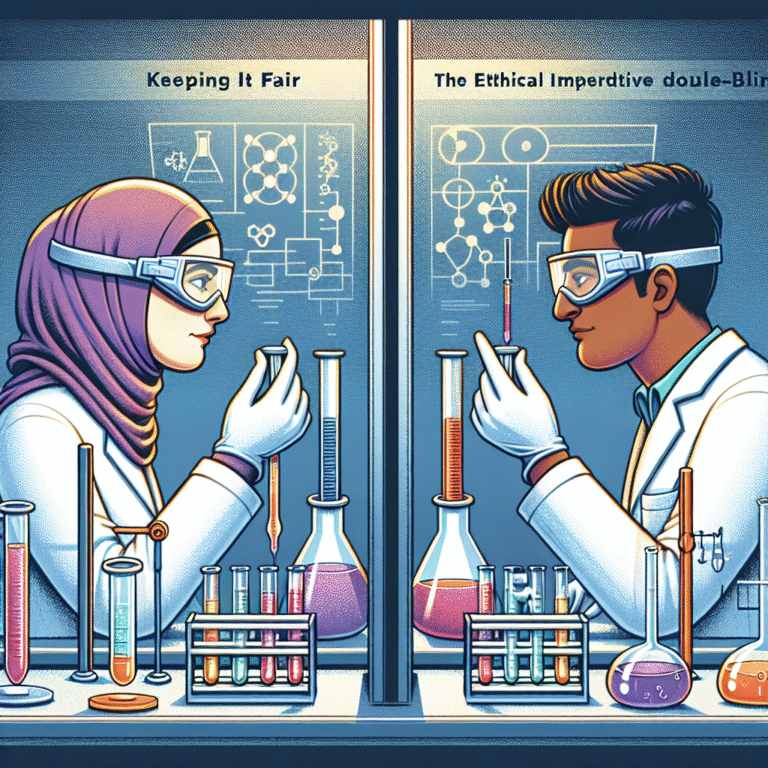Introduction
In a world overflowing with choices, from the mundane to the life-changing, decision-making emerges as a fundamental skill that influences our lives significantly. The weight of decisions can be daunting: should you invest in that stock, accept a job offer, or choose to pursue further education? The Science of Decision Making: Understanding Hypothesis Testing provides an essential framework for making these choices with clarity and confidence. In this article, we will delve into the fascinating science behind hypothesis testing, explore real-world applications, and equip you with strategies to make better decisions in your personal and professional life.
The Foundations of Decision Making
What is Decision Making?
At its core, decision-making involves evaluating options and choosing a course of action based on available information. It blends cognitive psychology with statistical principles, allowing individuals and organizations to navigate uncertainty effectively.
Understanding Hypothesis Testing
Hypothesis testing is a systematic method for evaluating assumptions and claims about a population based on sample data. By formulating a null hypothesis (H0) and an alternative hypothesis (H1), you set the stage for measuring the evidence against H0 using statistical methods.
Why Hypothesis Testing Matters
The Science of Decision Making: Understanding Hypothesis Testing plays a crucial role in various fields, from medicine and economics to marketing and social sciences. It equips decision-makers with tools to discern whether observed effects in data are statistically significant or simply due to chance.
The Hypothesis Testing Process
Step 1: Formulating Hypotheses
Null Hypothesis (H0): This represents a statement of no effect or no difference. For example, "there is no difference in the average test scores between students who study with a tutor and those who do not."
Alternative Hypothesis (H1): This is what you want to test or prove. Using the example above, H1 would state that "students who study with a tutor have higher average test scores."
Step 2: Selecting a Significance Level
The significance level (alpha) defines how willing you are to risk a Type I error (rejecting a true null hypothesis). Commonly, a threshold of 0.05 is used, meaning a 5% chance of erroneously rejecting H0.
Step 3: Choosing the Right Test
Depending on your data’s structure, you may choose different statistical tests (t-tests, chi-square tests, ANOVA, etc.), all fundamental components within The Science of Decision Making: Understanding Hypothesis Testing.
Step 4: Analyzing Data and Drawing Conclusions
Once you’ve collected and analyzed your data, you compare your p-value to the significance level. A p-value less than alpha indicates that you have enough evidence to reject the null hypothesis.
Step 5: Reporting Results
Transparency is key. Clearly communicate your findings, including statistical significance, potential limitations, and practical implications of the results.
Real-World Applications
Case Study 1: Clinical Trials in Medicine
In clinical trials, researchers use hypothesis testing to determine the effectiveness of new drugs. For instance, a pharmaceutical company might test whether a new anti-inflammatory medicine reduces pain more effectively than a placebo.
- Relevance: The Science of Decision Making: Understanding Hypothesis Testing ensures that potentially life-saving medications are evaluated thoroughly before approval.
Case Study 2: A/B Testing in Marketing
Companies frequently utilize A/B testing to enhance marketing strategies. For example, an e-commerce website might test two different layouts to see which drives more sales.
- Relevance: By leveraging The Science of Decision Making: Understanding Hypothesis Testing, marketers can make data-driven adjustments that optimize user experience and conversion rates.
Case Study 3: Election Polling
During elections, pollsters use hypothesis testing to predict outcomes. They often want to test if certain population groups favor a candidate over another.
- Relevance: The accuracy of these predictions relies heavily on sound statistical methods in line with The Science of Decision Making: Understanding Hypothesis Testing, which gives voters insights into public sentiment.
Charts and Tables for Clarity
Table 1: Hypothesis Testing Summary
| Step | Description |
|---|---|
| Formulating H0/H1 | Define the null and alternative hypotheses |
| Significance Level | Choose alpha (commonly set at 0.05) |
| Statistical Test | Select the appropriate test for your data |
| Analyze Data | Compare p-value against alpha |
| Report Results | Share findings and implications |
Chart 1: Example of P-Value Interpretation
Description: This chart visually demonstrates the cutoff for p-value interpretation in hypothesis testing, aiding readers in understanding when to reject or fail to reject the null hypothesis.
Improving Decisions Using Hypothesis Testing
Embrace Evidence-Based Decisions
One of the most significant advantages of The Science of Decision Making: Understanding Hypothesis Testing is that it encourages a shift from gut feelings to evidence-based reasoning. This transition can particularly enhance your decision-making effectiveness in business environments.
Learn From Failures
Not every hypothesis test leads to a significant result. Understanding that failure or non-significance doesn’t equate to uselessness is crucial in honing your decision-making skills. It is all part of the learning process.
Adapt and Evolve
As you gather more data and grow in knowledge, adjust your hypotheses and testing methods accordingly. The constant evolution of your approach mirroring The Science of Decision Making: Understanding Hypothesis Testing can lead to more refined results and better-informed decisions.
Seek Collaborative Input
Collaborate with others when making significant decisions. Leveraging diverse perspectives can enhance the hypothesis-generating process, leading to stronger, more informed choices.
Conclusion
The Science of Decision Making: Understanding Hypothesis Testing serves as a beacon for those navigating the often murky waters of choice and uncertainty. By grounding your decisions in scientific methods, you can reduce the noise and gain clearer insights into the paths you choose to take.
As you venture forward, remember that every decision is a learning experience. Use the insights gained from hypothesis testing to fuel a more informed, data-driven approach in your personal and professional life.
FAQs
1. What is the difference between H0 and H1?
The null hypothesis (H0) states that there is no effect or difference, while the alternative hypothesis (H1) proposes that there is a significant effect or difference.
2. How do I choose the right statistical test?
The appropriate statistical test depends on your data type (categorical or continuous), the number of groups being compared, and whether the data meets certain assumptions (like normality). Consulting a statistician can help clear up these dilemmas.
3. What does a p-value represent?
A p-value quantifies the probability of observing your data, or something more extreme, assuming that the null hypothesis is true. It helps decide whether to reject or fail to reject H0.
4. Can hypothesis testing be misused?
Yes, misuse can occur through improper test selection, data manipulation, or failure to correct for multiple comparisons. Adhering to best practices within The Science of Decision Making: Understanding Hypothesis Testing is crucial to avoid errors.
5. How can I apply hypothesis testing in daily life?
You can apply hypothesis testing in everyday decisions by framing choices as hypotheses—testing assumptions (e.g., "Does drinking coffee in the morning improve my focus?") and gathering evidence to inform your decisions.
By grounding your life decisions in principles derived from The Science of Decision Making: Understanding Hypothesis Testing, you can enhance the quality of your choices, reduce uncertainty, and improve your outcomes. Each decision—big or small—is an opportunity to learn and grow, so embrace the journey ahead!















